Located in Jinwan Aviation New City—one of Zhuhai’s fastest-growing urban districts—the KING ONE Community Center by E+UV addresses the urgent need for a true civic gathering space amid rapid urbanization. The site originally consisted of four isolated ancillary buildings surrounded by dense residential blocks. Each building, a product of rushed planning, suffered from closed facades, fragmented circulation, and a lack of cohesion. While the client initially proposed simple facade renovations and programmatic divisions, budget constraints made a conventional approach impractical.
E+UV’s vision went beyond superficial upgrades. The architects recognized that the soul of the community already existed within the site — the overlooked municipal green park adjacent to the buildings. Rather than treating the park as a backdrop, the design reimagined it as the spatial and social heart of the new community center, transforming disconnection into unity and inertia into vitality.
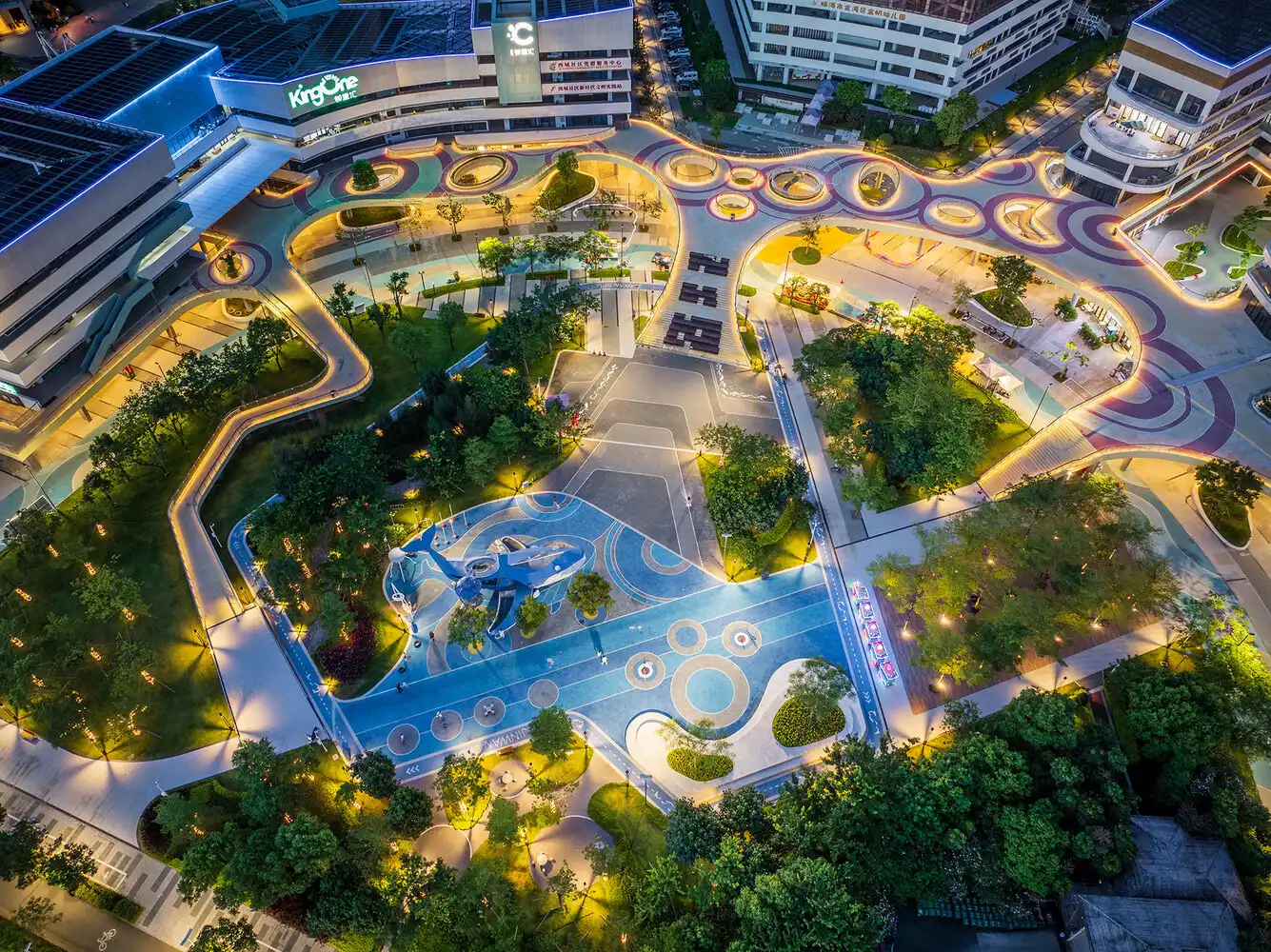
Reconnecting Architecture and Landscape
At the core of E+UV’s intervention lies a bold yet simple gesture: a sweeping elevated platform that unites the four buildings into a cohesive architectural ensemble. Positioned around the semi-circular greenbelt, this second-level walkway becomes both a physical and symbolic bridge — reconnecting once-isolated structures through shared public space.
The platform dramatically reorients the complex toward the park, opening previously blank facades and creating a continuous social loop. A network of ramps and stairways links the elevated level with the street, creating a dynamic interplay between upper and lower planes. This dual-level system improves pedestrian accessibility and adds commercial value to the retail spaces below.
The shaded area beneath the platform, a response to the humid Lingnan climate, transforms once-exposed sidewalks into comfortable microclimates. These shaded undercrofts offer cool retreats from the sun and protection from sudden coastal rain, turning what was once wasted space into an active layer of urban life.
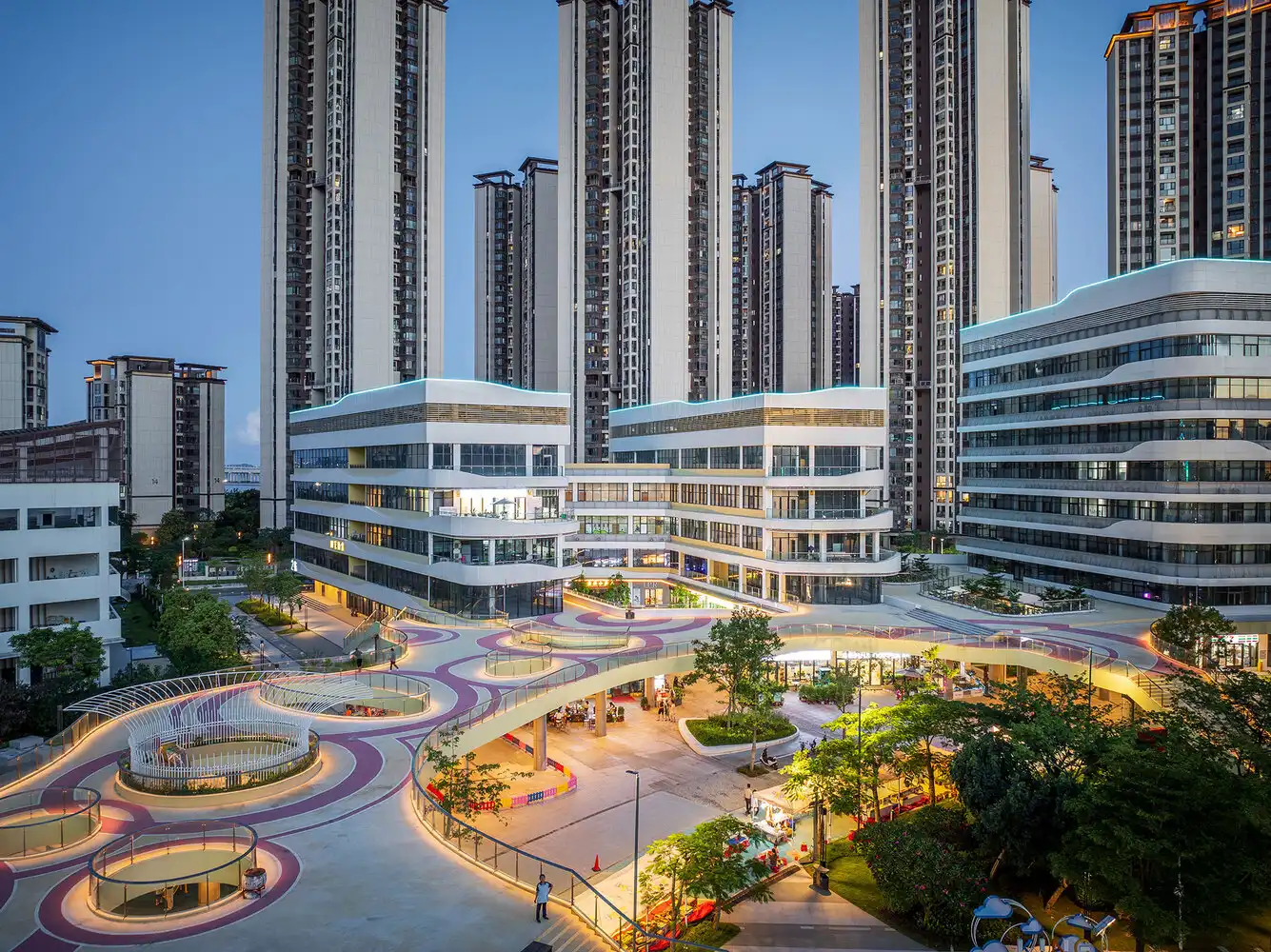
A Three-Dimensional Public Realm
The multi-level social landscape introduced by E+UV supports a diverse range of daily activities. Circular openings puncture the platform, framing trees and allowing shafts of daylight to filter through. Children play, elders gather for conversation, and parents wait for their children after school — scenes that collectively animate the space throughout the day.
The design’s ramp and slope system not only provides universal accessibility but also doubles as a favored playground for skateboarders and cyclists, fostering spontaneous recreation. On the upper level, the fresh food market becomes a central attraction. As evening falls and temperatures drop, the elevated promenade and community stage transform into a lively venue where residents gather to socialize, watch performances, or enjoy the sea breeze.
Above and below the platform, interactions unfold in layered perspectives — seeing and being seen, participating and observing. This dynamic spatial arrangement blurs the line between architecture and theater, where everyday life itself becomes the main performance.
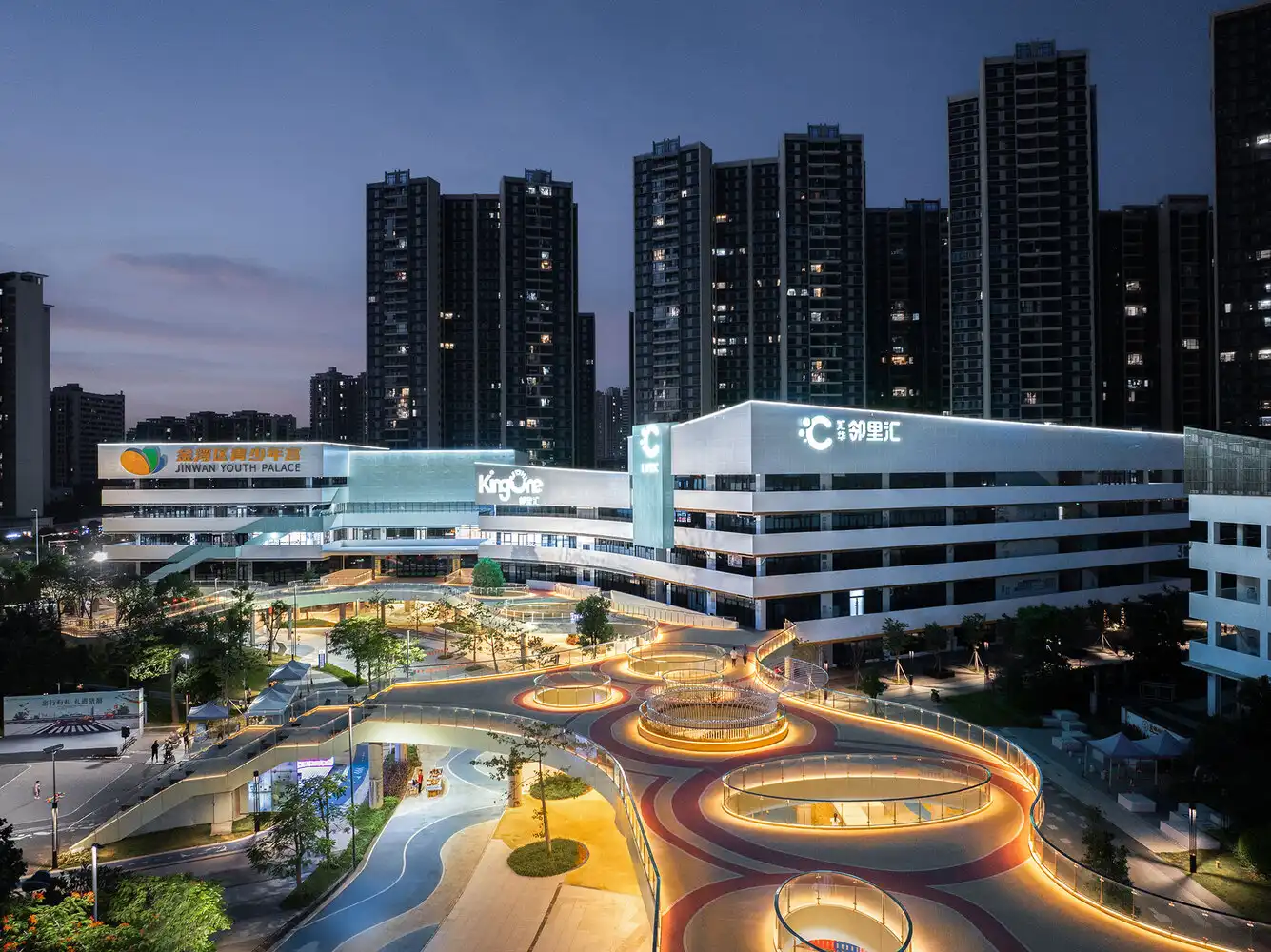
Light-Touch Design, Lasting Impact
With an extremely limited renovation budget, E+UV adopted a “light-touch” strategy that focuses on placemaking rather than costly structural overhauls. Instead of masking imperfections, the architects emphasized color and openness as tools for transformation. Each building was assigned a distinct theme color, visually expressing its function — from government services and dining to retail, senior facilities, and youth activities.
The previously dull facades, clad in perforated aluminum panels, were replaced with clean white horizontal bands, introducing rhythm and brightness to the ensemble. At the Youth Palace, the intervention was more radical: the facade was opened and reconfigured as an external circulation corridor. The spiraling staircase now animates the building’s exterior, turning movement itself into an architectural feature. Children running along the facade have become part of the community’s visual identity — a poetic expression of freedom and joy.
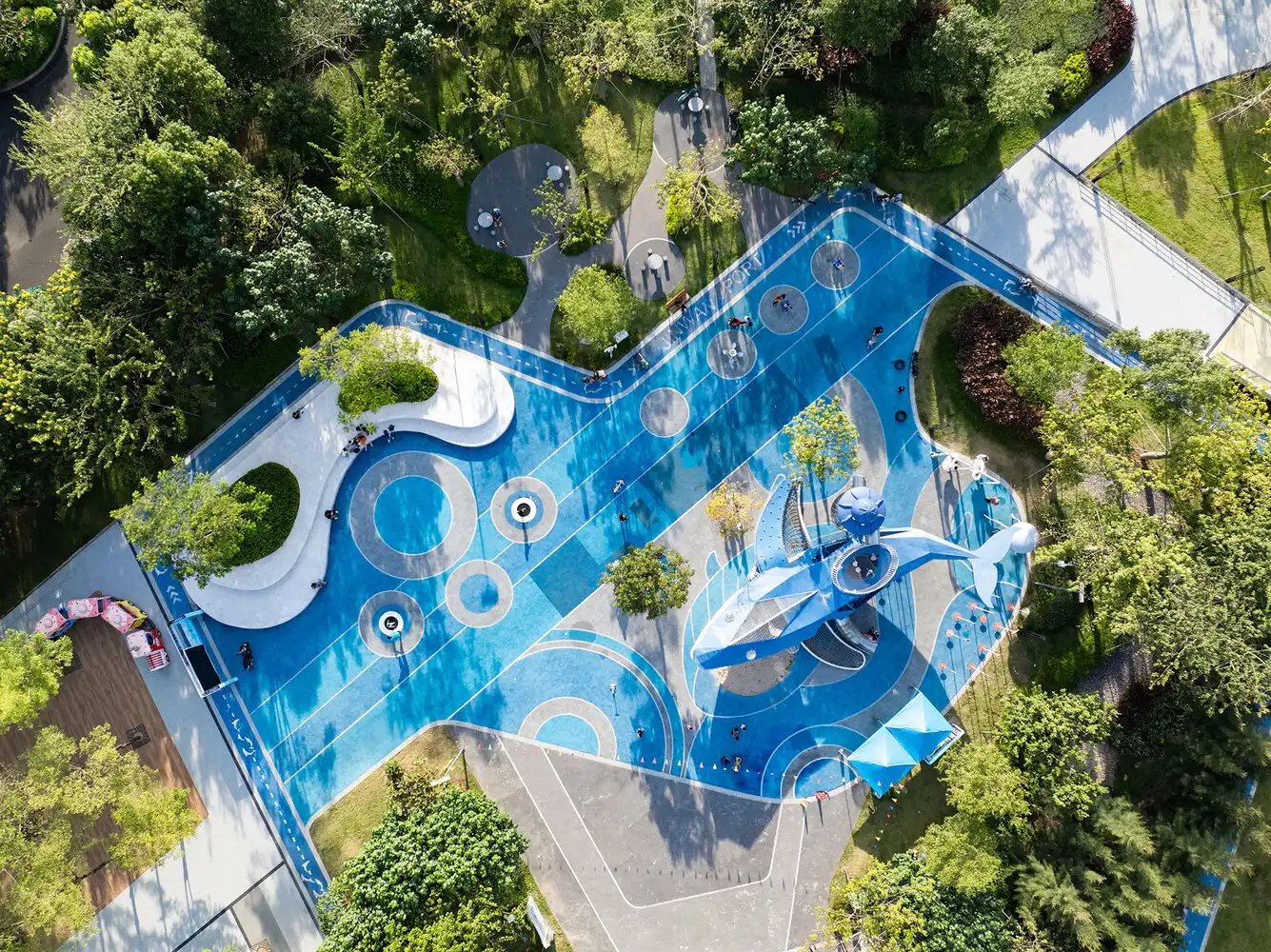
Landscape Integration and Community Ecology
E+UV treated the existing municipal greenbelt with care and restraint, preserving every mature tree on site. Rather than clearing vegetation, the design integrated new activity-oriented landscapes among the existing canopies. The platform openings were carefully aligned with the trees, ensuring continuity between the shaded ground plane and the elevated park deck above.
Underneath, a playground encourages children’s exploration, while a grand staircase and open-air stage provide a flexible venue for community and school events. The fire lane beneath the structure was reimagined as an ocean-themed pathway, transforming a utilitarian corridor into a vibrant pedestrian promenade that hosts night markets and cultural activities.
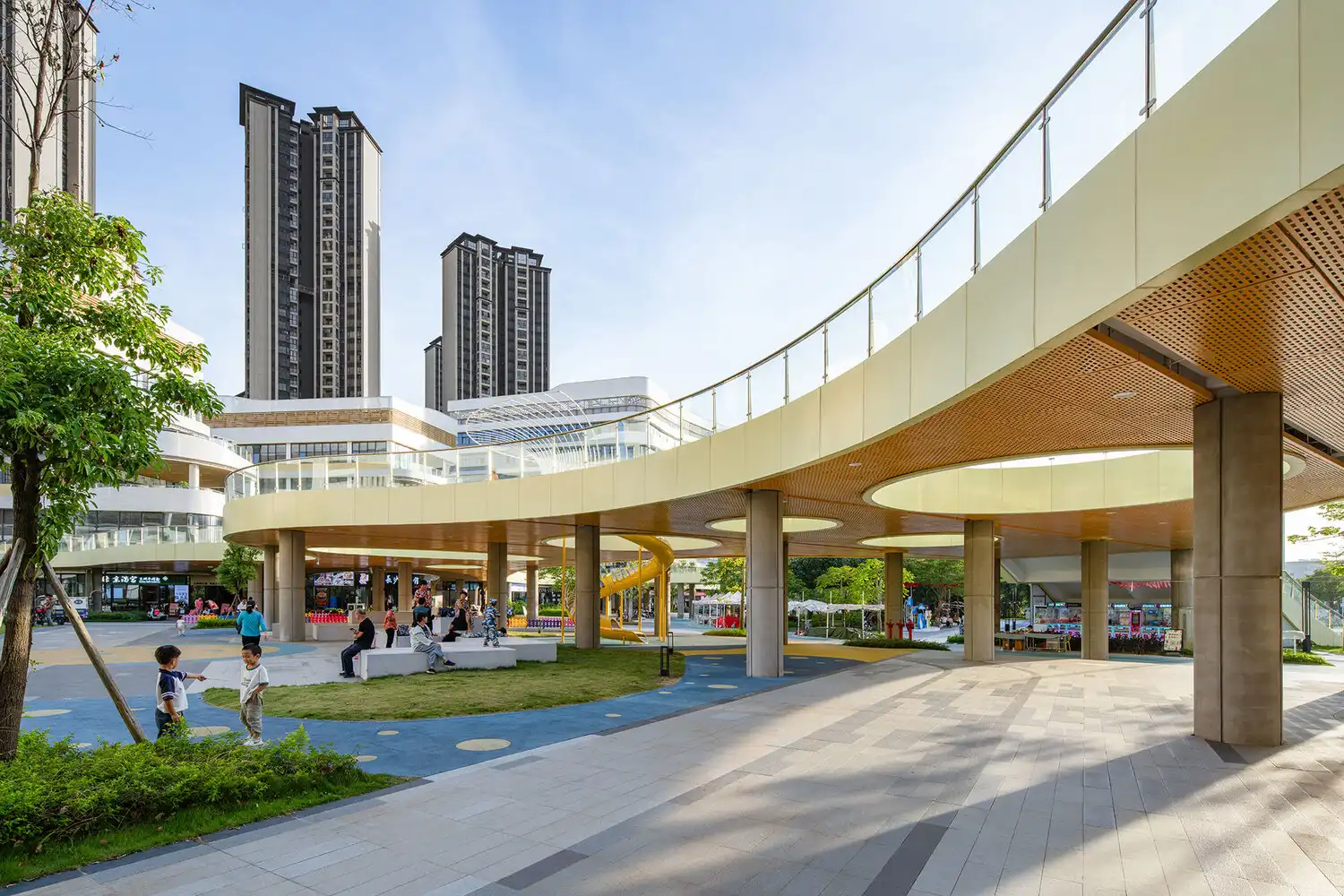
A Model for Human-Centered Urban Renewal
Since opening, the KING ONE Community Center has rapidly evolved into Zhuhai’s most dynamic civic hub, hosting over a hundred community events in its first year. The rejuvenated greenbelt now forms a lush, inviting backdrop for daily life, balancing commercial vibrancy with ecological comfort. Each evening, the park-centered night market becomes a bustling epicenter of social life, drawing residents together under the canopy of trees and the glow of the platform lights.
More than an architectural success, the project stands as a social experiment in inclusivity and participation. By focusing on people instead of form, E+UV demonstrates that meaningful change can arise from small-scale, budget-conscious interventions. The KING ONE Community Center proves that when architecture embraces community and ecology as equal partners, even modest projects can achieve monumental social impact.
Today, this once-overlooked site has become a true urban living room — a place where architecture, nature, and human life intertwine. Under the shade of preserved trees and along the rhythm of the elevated promenade, daily routines unfold as moments of collective storytelling. In its humble yet transformative design, the KING ONE Community Center captures the essence of contemporary urban renewal: simple, inclusive, and profoundly alive.
Photography: Rui Du & Siming Wu
- Adaptive Reuse in Architecture
- architecture and community engagement
- Chinese contemporary architecture
- Civic architecture
- climate responsive design
- Community center design
- E+UV architects
- Elevated walkway design
- human-centered architecture
- KING ONE Community Center
- Landscape Integration
- Low-budget renovation
- Mixed-use community spaces
- Placemaking architecture
- Public realm revitalization
- public space design
- Social sustainability
- Urban regeneration in China
- Urban renewal projects
- Zhuhai architecture























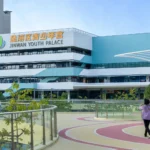
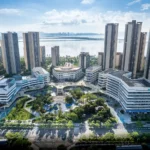
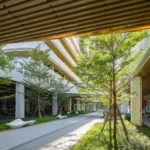
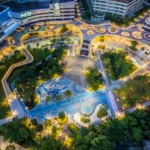
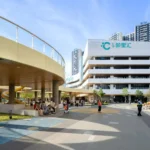
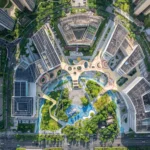
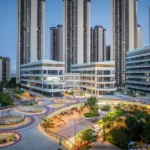
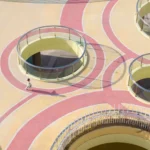
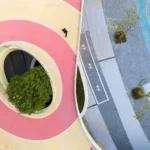
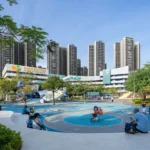
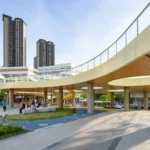
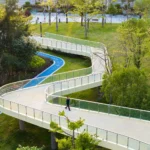

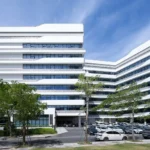


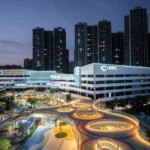
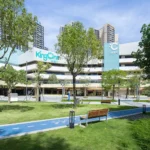
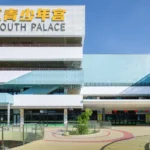
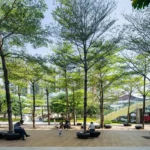

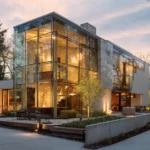











Leave a comment